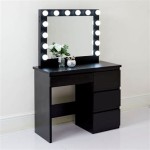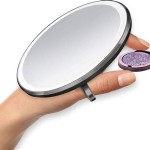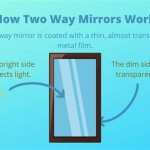How To Screen Mirror iPhone to LG Smart TV Without WiFi
Screen mirroring allows users to project the display of their iPhone onto a larger screen, such as an LG Smart TV. While most screen mirroring methods rely on a WiFi network, circumstances may arise where a WiFi connection is unavailable or unreliable. This article details the alternative methods available for screen mirroring an iPhone to an LG Smart TV without the use of a WiFi network, focusing on the necessary hardware, setup processes, and potential limitations.
Traditional screen mirroring leverages technologies like AirPlay (for Apple devices) and Miracast, both of which typically require a shared WiFi network to facilitate communication between the iPhone and the LG Smart TV. These protocols enable seamless streaming of content, including videos, photos, presentations, and even the iPhone's user interface. However, when WiFi is not accessible, alternative approaches must be implemented.
Utilizing a Wired Connection: HDMI Adapter
The most reliable method for screen mirroring without WiFi involves a wired connection using a Lightning to HDMI adapter. This adapter physically connects the iPhone to the LG Smart TV via an HDMI cable, transmitting both audio and video signals without relying on a network.
The required hardware includes:
- A Lightning to HDMI adapter: These adapters are readily available from Apple and third-party manufacturers. Ensure the adapter is compatible with the specific iPhone model being used.
- An HDMI cable: A standard HDMI cable is needed to connect the adapter to the LG Smart TV. The length of the cable will depend on the distance between the iPhone and the TV.
The setup process is relatively straightforward:
- Connect the Lightning to HDMI adapter to the iPhone's Lightning port.
- Plug one end of the HDMI cable into the HDMI port on the adapter.
- Plug the other end of the HDMI cable into an available HDMI port on the LG Smart TV.
- Turn on the LG Smart TV and select the appropriate HDMI input channel corresponding to the port where the HDMI cable is connected.
- The iPhone's screen should now be mirrored on the LG Smart TV.
Once connected, the iPhone's display will be directly mirrored onto the TV screen. Users can then navigate the iPhone as usual, and the content will be displayed on the larger screen. The HDMI connection also transmits audio, providing sound through the TV's speakers.
This method offers several advantages:
- Reliability: Wired connections are generally more stable and less prone to interference compared to wireless connections.
- Low Latency: The wired connection minimizes lag, making it suitable for activities such as gaming or interactive presentations.
- Security: A physical connection eliminates the risk of unauthorized access or interception of the screen mirroring signal.
However, there are also potential drawbacks:
- Limited Mobility: The iPhone is tethered to the TV by the HDMI cable, restricting movement.
- Adapter Dependency: The solution relies on the availability and functionality of the Lightning to HDMI adapter.
- Power Consumption: Prolonged use can drain the iPhone's battery, especially when mirroring demanding content. Consider connecting the iPhone to a power source while mirroring to mitigate battery drain.
Using a Mobile Hotspot and Screen Mirroring Application
While the core concept aims to avoid WiFi, a mobile hotspot can create a localized network that allows the iPhone and LG Smart TV to communicate for screen mirroring purposes, even without an external WiFi router. This method essentially turns the iPhone into a temporary WiFi access point.
The required elements are:
- An iPhone with cellular data connectivity.
- An LG Smart TV with screen mirroring capabilities (e.g., Miracast).
- A screen mirroring application on the LG Smart TV.
The setup process involves several steps:
- Activate the Personal Hotspot on the iPhone. This setting is typically found under "Settings" > "Personal Hotspot." Enable the "Allow Others to Join" option. Note the hotspot's password as it will be needed to connect the LG Smart TV.
- On the LG Smart TV, navigate to the network settings.
- Search for available WiFi networks and select the iPhone's hotspot from the list.
- Enter the hotspot password when prompted. The LG Smart TV should now be connected to the iPhone's hotspot.
- Once the TV is connected to the hotspot, access the screen mirroring application on the LG Smart TV. The name of the app may vary depending on the LG Smart TV model (e.g., Screen Share, Miracast).
- On the iPhone, enable screen mirroring. This is typically found in the Control Center (swipe down from the top-right corner of the screen) by tapping the "Screen Mirroring" icon.
- Select the LG Smart TV from the list of available devices.
- The iPhone's screen should now be mirrored to the LG Smart TV.
This method offers the advantage of wireless freedom, allowing the iPhone to be moved around within the range of the hotspot signal. However, it is essential to consider the limitations:
- Data Consumption: Mirroring content over a mobile hotspot consumes cellular data. Streaming high-definition video can quickly deplete data allowances, potentially incurring additional charges.
- Battery Drain: Creating a mobile hotspot and simultaneously mirroring the screen can significantly drain the iPhone's battery. Keeping the iPhone plugged into a power source is recommended.
- Performance: The stability and performance of the screen mirroring connection will depend on the strength of the cellular signal and the data speed. A weak signal can result in lag, buffering, or disconnections.
- Security Considerations: While the hotspot is password-protected, it is still advisable to use strong passwords and monitor data usage to prevent unauthorized access.
Furthermore, not all LG Smart TVs are compatible with all screen mirroring protocols. Consult the LG Smart TV's user manual to determine the supported protocols and ensure compatibility with the iPhone.
Direct USB Connection (Limited Functionality)
While not strictly "screen mirroring" in the traditional sense, connecting the iPhone to the LG Smart TV via USB might allow access to certain media files stored on the iPhone. This method generally does not project the entire iPhone screen, but rather allows the TV to recognize the iPhone as an external storage device.
The required hardware is:
- A Lightning to USB cable (the same cable used for charging the iPhone).
The setup process is:
- Connect the Lightning end of the cable to the iPhone.
- Connect the USB end of the cable to a USB port on the LG Smart TV.
- Turn on the LG Smart TV and select the appropriate USB input. The process for selecting the USB input varies depending on the TV model; consult the TV's user manual.
- The LG Smart TV may then display the contents of the iPhone's storage.
It is crucial to understand the limitations of this method:
- Limited Screen Mirroring: This method does not mirror the entire iPhone screen. It primarily allows access to photos and videos stored on the iPhone's camera roll.
- File Format Compatibility: The LG Smart TV may not support all file formats stored on the iPhone. Incompatible files will not be playable.
- DRM Restrictions: Content protected by Digital Rights Management (DRM) may not be accessible or playable.
- No App Mirroring: Applications running on the iPhone cannot be mirrored using this method. Only media files are accessible.
The ability to access media files via USB depends on the specific LG Smart TV model and its software. Some TVs may not recognize the iPhone at all, while others may offer limited functionality.
In summary, while direct USB connection offers a simple way to access some media files, it is not a true alternative to screen mirroring without WiFi. Its functionality is severely limited compared to the HDMI adapter or mobile hotspot methods.
Each of these methods offers a way to connect an iPhone to an LG Smart TV without a traditional WiFi network. The best option depends on the specific needs and available resources. The HDMI adapter provides the most reliable and lag-free experience, while the mobile hotspot offers wireless freedom at the cost of data consumption and battery drain. The USB connection offers limited functionality and should be considered only as a last resort for accessing media files.

How To Mirror Iphone Lg Smart Tv Without Wifi

Simple Ways To Mirror Iphone Tv Without Wifi 6 Steps

How To Cast Any Smart Tv Without Wifi Airdroid

How To Screen Mirror Iphone Lg Smart Tv Connect Using Airplay

How To Screen Mirror Iphone A Lg Smart Tv

Simple Ways To Mirror Iphone Tv Without Wifi 6 Steps

How To Mirror Iphone Tv Without Wi Fi
How To Mirror An Iphone 7 Onto Lg Smart Tv Quora
:max_bytes(150000):strip_icc()/lg-screen-share-menu-yellow-819f174e11fa46eb9ab39a80d20a6872.jpg?strip=all)
How To Do Screen Mirroring On Lg Smart Tvs

How To Screen Mirror Iphone Lg Smart Tv Connect Using Airplay








